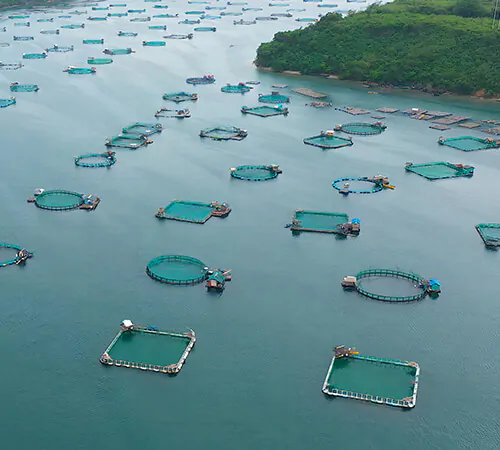Tilapia are surprisingly adaptable. They thrive in quiet backyard ponds, bustling commercial farms, and large rivers. Their resilience makes them a favorite worldwide.
Tilapia live in freshwater lakes, rivers, ponds, and specially managed farm environments. They’re known for tolerating wide temperature ranges and varying water conditions, so tilapia are now found in many corners of the globe. Understanding their natural and farmed habitats helps suppliers, importers, and fish enthusiasts maintain the high quality that tilapia lovers expect.
Let’s dive into the details of tilapia habitats.
Why Do Tilapia Thrive in Freshwater Environments?
Tilapia live comfortably in warm, slow-moving waters with abundant algae and plant life.
They originated in Africa’s rivers and lakes, but their adaptability has led farmers worldwide to raise them in ponds and artificial systems.
- Tilapia thrive in freshwater partly because they feed on algae, plankton, and tiny aquatic organisms. This diet encourages fast growth, which appeals to fish farms focused on efficient production. With the right conditions, tilapia populations can flourish quickly, meeting the global demand for cost-effective, frozen fish supplies.
How Do Tilapia Adapt to Various Water Conditions?
Even though they prefer warm water, tilapia can handle moderate fluctuations.
This hardiness makes them attractive for different climates—from tropical African zones to controlled environments in China or the United States.
- Their tolerance for temperature, salinity, and oxygen changes is extraordinary. Farmers and wholesalers appreciate this flexibility, as it translates into stable growth rates and consistent yields, which are crucial when you’re a supplier or factory distributing to various markets or proveedores around the globe.
What About Farmed Tilapia?
Farm-raised tilapia often live in ponds or tanks, where water quality and feed are carefully managed.
This controlled approach ensures a steady, predictable environment, allowing fish to grow faster and more uniformly than wild-caught populations.
- Fish farmers maintain ideal temperature, pH, and feeding schedules. At yanghuafishery, we rely on proven methods and certifications like FDA, BRC, ASC, and BAP to keep tilapia healthy. The result? A consistent supply that meets the rigorous standards demanded by importers such as Doucoure, who needs reliable quantities and quality every month.
Do Tilapia Ever Inhabit Saltwater?
Some tilapia strains can tolerate brackish or slightly salty water, though pure saltwater living is rare.
Instead, farms sometimes blend freshwater with a small amount of salt to enhance flavor or control parasites.
- Brackish water can give tilapia a firmer texture. However, it requires precise water management. While this isn’t as common as freshwater farming, it’s a growing trend in certain regions. By experimenting with salinity, farmers tailor the end product to meet different market preferences, offering options that might taste slightly different but remain fresh and appealing.
Dive Deeper: Tilapia Habitat Breakdown
Below is a quick overview of tilapia’s preferred water conditions and how they adapt:
| Habitat Type | Water Conditions | Key Factors for Success |
|---|---|---|
| Freshwater Lakes | Warm, moderate flow | Algae & plant availability |
| Ponds & Tanks | Controlled environment | Balanced feed, steady temp, pH |
| Brackish Water | Slightly salty conditions | Good filtration, precise salinity |
| Rivers & Canals | Steady or slow-moving flow | Temperature & oxygen levels |
Temperature Preferences
- Ideal Range: 20–30°C (68–86°F)
- Impact: Warmer water boosts metabolism, aiding faster growth. Below 15°C (59°F), tilapia slow down.
Oxygen and Water Quality
- Oxygen Levels: Tilapia need moderate to high oxygen content.
- Filtration: Proper filtration reduces waste buildup, minimizing disease risks.
Feeding Habits
- Primary Diet: Algae, plant matter, tiny aquatic organisms.
- Supplemental Feed: Pellets or grains in farming operations, often fortified with protein and vitamins.
All these factors combine to create optimal living spaces for tilapia, whether wild or farm-raised. Doucoure, who focuses on frozen tilapia for African markets, must know that the fish have grown in healthy conditions, ensuring they remain fresh and high-quality through shipment and distribution.
Conclusion
Tilapia are versatile fish that thrive in warm, calm waters, whether in a natural freshwater lake or a well-managed farm pond. By controlling temperature, feed, and water quality, tilapia farmers can produce large volumes of healthy fish, offering customers a reliable and affordable protein source worldwide.



